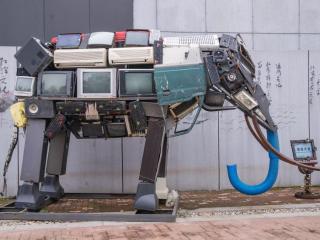Creativity on the edge: How to boost your employee’s usable creativity?
| Datum: | 07 juli 2016 |
| Auteur: | Yan Shao |

What would you do if you were challenged to come up with a novel solution that is also practical and useful. Would you give priority to novelty of the solution and “think out of the box” to generate as many novel ideas as possible and then choose the most practical ideas from these. Or, would you first focus on the feasibility and usefulness of a solution by taking existing materiel and organizational constraints into account and not waste time with unfeasible options?
We know that individuals’ and teams’ achievement goal orientation has a strong influence on their creative achievements. A learning goal orientation motivates people to explore novel options, thus contributing to novelty but less to the usefulness of solutions. In contrast, a performance goal orientation motivates people to reduce uncertainty by drawing on familiar frameworks and focusing on feasible solutions that will be valued by others, which in turn results in usefulness but not per se in novelty of the solutions.
Could we combine the best of those two worlds and induce learning ánd performance achievement goal orientations simultaneously among employees? That is: is it possible to pursue novelty and usefulness of problem solutions simultaneously? Or is it only possible to execute sequentially, thus first work without limits and then continue with the feasible ones, or work within the limits and generate options from there? Or is it even so that people can only work in one mode of goal orientation: a learning goal or a performance goal?
In an experimental study, Miron-Spektor and Beenen (2015) tested those five possibilities with 189 students in a task to develop in a 20 min period a prototype of a décor object that should be both novel and useful. Using different task instructions the task was framed as an opportunity to learn or to demonstrate their competences, and executed both sequentially or simultaneously. A control group received no framing instruction.
The researchers found that students in the simultaneous learning ánd performance goals group developed more novel and useful products than participants who pursued both goals sequentially. Moreover, compared to focusing on either learning or performance goals alone, simultaneous goal pursuit did not cause performance decrements, while sequential goal pursuit led to lower novelty and usefulness.
Thus, simultaneous goals pursuit results in generating more novel and useful products than focusing on one goal at a time. There is however a cost to this. Monitoring and regulating multiple goals simultaneously showed to be quite demanding. In addition, it can can also induce feelings of threat, anxiety, and tension, which may negatively affect one’s ability to think creatively. Miron-Spektor and Beenen (2015) showed that when students experienced negative affect from pursuing two goals simultaneously, the potential positive effect of simultaneously goal pursuit on creativity disappeared.
What does it mean for practice? The taking-home message for managers is that inducing learning ánd performance goal orientation simultaneously among their employees is not only possible, but also a more effective strategy than focusing on a single goal at one time. Importantly, managers should be aware of the demanding nature of regulating two goals simultaneously. This can raise negative experiences, such as anxiety, stress and tension, which may reduce the potential benefits on creativity. Miron-Spektor and Beenen (2015) suggest that managers should help individuals mitigate negative emotions of tension and encourage coping strategies. In this way innovative and useful results will be achieved.
This article is based on the work of Miron-Spektor, E., & Beenen, G. (2015). Motivating creativity: The effects of sequential and simultaneous learning and performance achievement goals on product novelty and usefulness. Organizational Behavior and Human Decision Processes, 127, 53-65.


